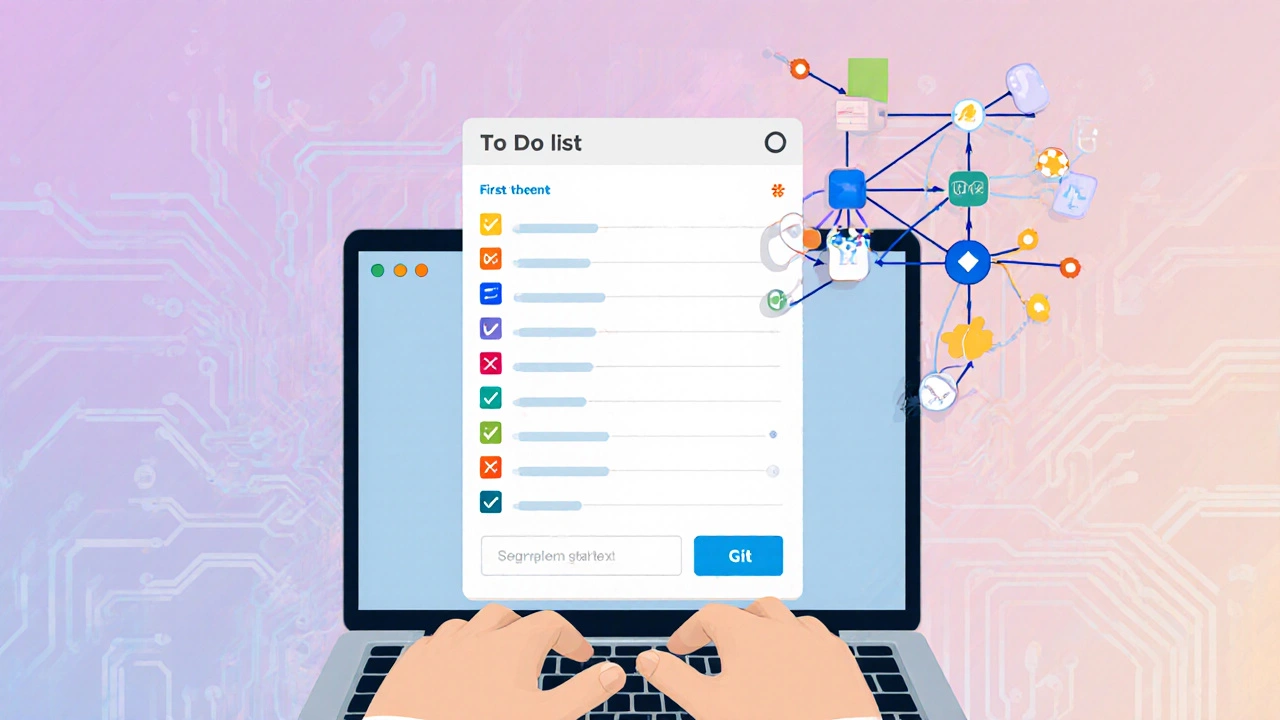Self-Study Coding Time Calculator
Plan Your Self-Study Schedule
This tool helps you create a realistic coding study plan based on your goals and available time. The calculator follows best practices from the article to ensure success.
Daily Study Breakdown
Recommended: 45-60 minutesRecommended Daily Structure
20 min
Learning Concepts
20 min
Hands-On Practice
10 min
Project Work
Weekly Milestones
Recommended Resources
Quick Takeaways
- Start with a clear learning path and realistic milestones.
- Choose a lightweight IDE, like Visual Studio Code - a free, extensible editor trusted by millions.
- Leverage free, high‑quality resources: YouTube channels, documentation sites, and community forums.
- Build and share real projects on GitHub to get feedback and track progress.
- Stay motivated by joining a community or finding a mentor for regular code reviews.
What is self‑study coding?
Self‑study coding is a learning approach where you teach yourself programming without formal classroom instruction. It relies on curated resources, disciplined practice, and peer feedback rather than a teacher’s syllabus.
People choose this route to save money, set their own pace, or focus on a niche language that isn’t covered in local courses. The key is treating the process like a personal project: define goals, pick tools, and measure outcomes.
Core ingredients for solo success
Even without a teacher, you still need a structured framework. Below are the building blocks that turn curiosity into competence.
- Learning path - a sequenced list of topics that guides you from basics to advanced concepts.
- Integrated Development Environment (IDE) - the software you write, run, and debug code in.
- Online resources - tutorials, documentation, and video courses that explain each step.
- Community forum - places like Stack Overflow where you can ask questions and read solutions.
- Version‑control platform - a public repo (e.g., GitHub) to store your code and showcase work.
- Mentorship or peer review - occasional feedback from more experienced developers.

Choosing the right resources
When you’re on your own, the sheer volume of tutorials can be overwhelming. Pick resources that match three criteria: credibility, depth, and free or low‑cost access.
- FreeCodeCamp - offers a full‑stack curriculum, interactive challenges, and a built‑in community for feedback.
- MDN Web Docs - the go‑to reference for HTML, CSS, and JavaScript, written by the developers who maintain the standards.
- YouTube channels - look for creators who pair explanations with live coding (e.g., Traversy Media, The Net Ninja).
- Coursera & edX - modestly priced courses from universities that provide certificates if you need formal proof.
- Books - classics like “Eloquent JavaScript” or “Automate the Boring Stuff with Python” give you a printable roadmap.
Keep a spreadsheet or Notion page that logs each resource, the topic covered, and the date you finished it. This simple habit turns random browsing into a measurable study plan.
Setting up your development environment
Choosing an IDE that feels comfortable speeds up learning. Visual Studio Code is lightweight, cross‑platform, and has an extension marketplace for almost any language. Install the language‑specific extensions (Python, JavaScript, etc.) and enable auto‑format on save to keep code tidy without extra effort.
Don’t forget version control. Install Git, create a GitHub account, and initialize a repository for every new project. Even a one‑file script benefits from history and backup.
Building real projects & a portfolio
Theory alone won’t make you a developer. Pick a project that solves a small real‑world problem - a to‑do list, a weather app, or a script that renames files in bulk. Commit early and often; each commit becomes a learning checkpoint.
When the project reaches a usable state, push it to GitHub. Write a clear README, add a screenshot, and tag the technologies used. Recruit a friend or post on a community forum for a quick code review. Those tiny feedback loops build confidence faster than solitary polishing.
Getting feedback & staying motivated
Isolation is the biggest dropout reason. Join at least one community forum (e.g., Reddit’s r/learnprogramming or Discord dev servers). Ask a specific question, share a snippet, and credit the answerer. The public nature of the interaction creates accountability.
If possible, arrange a mentorship relationship. It can be as informal as a senior developer you met on Twitter who reviews your pull request once a month. The guidance doesn’t have to be paid; many seasoned coders enjoy giving back.
Set weekly milestones (e.g., “finish the API section of the Node.js tutorial”) and celebrate them with a small reward - a coffee, a movie night, or an extra hour of gaming. Progress tracking, however tiny, fuels the habit loop.
Learning approaches compared
| Aspect | Self‑study coding | Online courses (e.g., Coursera) | Coding bootcamps (full‑time) |
|---|---|---|---|
| Cost | Mostly free; occasional paid books or certifications | $30‑$200 per course, often with financial aid | $7,000‑$15,000 upfront |
| Time commitment | Flexible; you set the schedule | Structured weekly modules (4‑12 weeks) | 40‑80 hours per week for 12‑16 weeks |
| Curriculum depth | Varies; you pick depth per topic | Curated pathways, often industry‑aligned | Intensive, job‑ready stack coverage |
| Mentorship | Optional; community‑driven | Instructors and discussion forums | Dedicated career coaches and peer groups |
| Job placement support | None, unless you network yourself | Limited, sometimes certification | High, with interview prep and recruiter connections |
For most beginners who just want to see if programming clicks, self‑study coding offers the lowest barrier. If you need a fast‑track to a job, a bootcamp might be worth the investment.
Next steps checklist
- Write down three concrete goals (e.g., “build a personal blog in React by month‑end”).
- Install Visual Studio Code and set up Git.
- Pick one free curriculum (FreeCodeCamp’s JavaScript Algorithms) and schedule daily 45‑minute slots.
- Create a GitHub repo for your first project and push the initial commit.
- Join a community forum (Stack Overflow or a Discord server) and ask your first question within the first week.
Frequently Asked Questions
Is it realistic to become a professional developer by only self‑studying?
Yes, many developers land their first job after building a solid portfolio through self‑study. The key is to produce real, shareable projects, get code reviews, and demonstrate continuous learning on platforms like GitHub.
How much time should I allocate each week?
Consistency beats intensity. Aim for 5‑7 hours spread over 4‑5 days. Even short 30‑minute coding sprints keep the mental model fresh.
What programming language should a beginner start with?
JavaScript is a safe bet because it runs in every browser, powers web front‑ends, and has a vibrant ecosystem for back‑end (Node.js) and mobile (React Native) development.
Do I need a degree to get hired after self‑studying?
Most tech companies prioritize skills over diplomas. A strong portfolio, clear GitHub history, and solid interview performance can outweigh a formal degree.
How can I get feedback on my code without a teacher?
Post snippets on Stack Overflow, join a Discord dev channel, or request a code review on GitHub via pull‑request comments. Most volunteers appreciate concise questions and will offer constructive suggestions.
